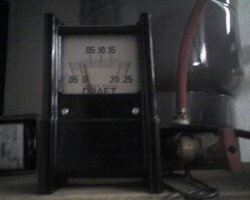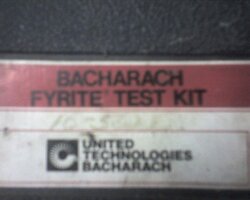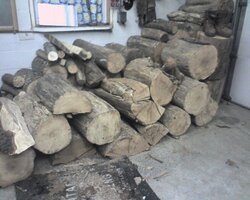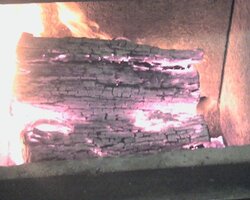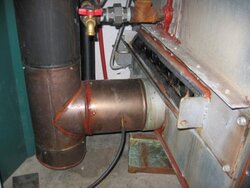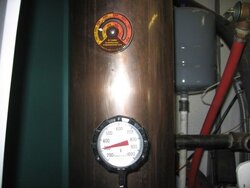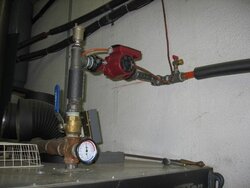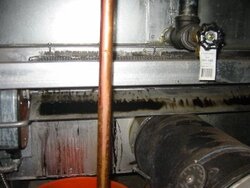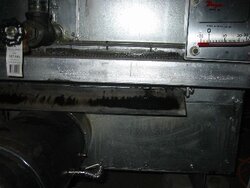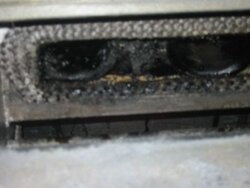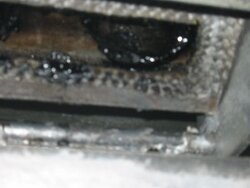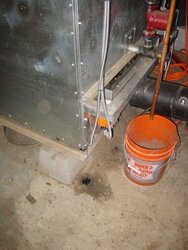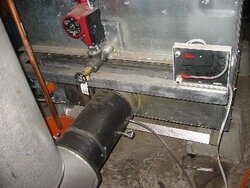I have been watching this thread since the beginning and something about all of this just doesn't make common sense to me. So, I need to be educated. Let me know where this is in error.
To me, draft and stack temp are directly related. Unless there is an air leak or air is being added by a barom damper or the like, 100% of the draft is pulling air through the burn and out the stack. The more air pulled through the burn, the more burn and heat is generated. Heat in the stack is easily measured with a probe thermometer. If stack temp is where it is "supposed" to be, then draft has to be "correct." And vice versa. Too hot, too much draft; too cool, not enough draft. Assuming of course, good wood, good boiler design, good path for the burn gases to escape, etc. The same thing can be achieved by measuring draft directly -- the higher the w.c., the more air, the more heat, and vice versa.
Now, if somewhere there is dripping coming down through the stack or somewhere in the exhaust stream, and stack temp is where it is "supposed" to be, something is wrong. If the condensation is water, that condensation is not likely to be occurring in that part of the stack where the temp is 350 or more. It's too hot. Water will vaporize to steam. Water condensation has to be occurring where the temp is a fair amount less, probably higher up the stack where sufficient temp is not being maintained to prevent condensation. If it's water condensation, I would look at the chimney design and find out why the upper stack is cool enough to condense out the water, and so much water that it can drip back down through the hot part of the chimney. Can the wood be way too wet? Are there air leaks somewhere? Is the chimney so long and in a cool environment that the "supposed" to stack temp can't heat the chimney all the way up? Assuming proper boiler design, there has to be a chimney problem.
If the condensation is not water but tar, goo, creostoe, yuck, etc., then combustion is not complete enough and unburned wood gases are condensing out. These can condense also, but I understand the temp needs to be less than about 250-300 or so for this to happen. A well-designed boiler up to heat simply should not have unburned gases in the exhaust steam of any consequence. Non-water consensation should not occur except possibly on fire up until the boiler is up to heat and possibly on cool down, although should not happen here because there should be nothing left to burn -- that's why the boiler is cooling down. So the problem source has to be a problem in boiler design or operation which is allowing unburned gases of consequence or again, a chimney problem.
or . . . is there extra wood be thrown in near the end of the burn of too little quantity to get the boiler back up to heat, so there are unburned gases?
or . . . is the bypass damper not closing all the way or leaking and allowing unburned gases and water vapor from the firebox directly up the stack?
or . . . (other ideas?)
Last, stack temp where it is "supposed" to be may be the "source" of the problem, assuming proper boiler design and operation, but this also has to relate to a chimney which is not the "ideal" chimney. The stack temp may have to be higher than the "supposed to be temp" due to the particular chimney design and location factors. If the chimney is too long, or too cool, or too many bends, or . . ., more heat simply might be needed to heat the chimney all the way to the top and achieve proper operation, albeit at some reduction in maximum possible efficiency given ideal conditions. Stack probe temp about 18" above the flue exit from the boiler can be 600 or higher, perhaps even 800, without causing a problem for a stainless steel, insulated chimney properly installed and in good condition. Obviously, we want to burn at the minimum temp needed for good boiler/chimney operation and thereby at as high an efficiency as we can, given our particular circumstances.
The threads (or mfr recommendation) suggesting stack temp of 300-400 are not wrong; in my mind they simply relate to "ideal" chimney conditions and "ideal" wood and "ideal" boiler operation which translate to maximum efficiency. Those temps are where we all would like to be, if we could, buy we all can't.
For those who can achieve this, they are lucky. I have a feeling, unless most of us have ideal chimneys and ideal wood and operate our boilers perfectly, most of us cannot consistently achieve that given our chimney design and our wood type and moisture content and how we actually operate our boilers, all introducing many variables. For me, with my 22 foot chimney through a cold attic, and burning very dry pine slab wood, my probe temp will be 450-500 during most of the burn, with a peak of just under 600, and end of burn down to 300-400. My boiler purs on this, produces the heat I need, and no smoke, no creosote, no condensation, practically no ash, and no problems. For me that means this is the correct temp, regardless of any "supposed" to temp.
As mentioned above, please correct me where I am off base. Education never ceases.


